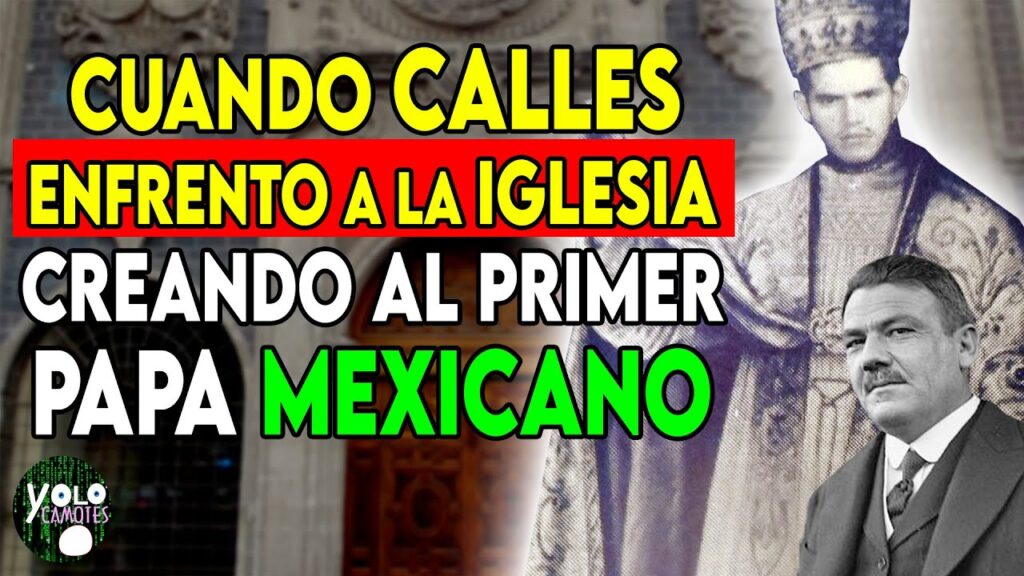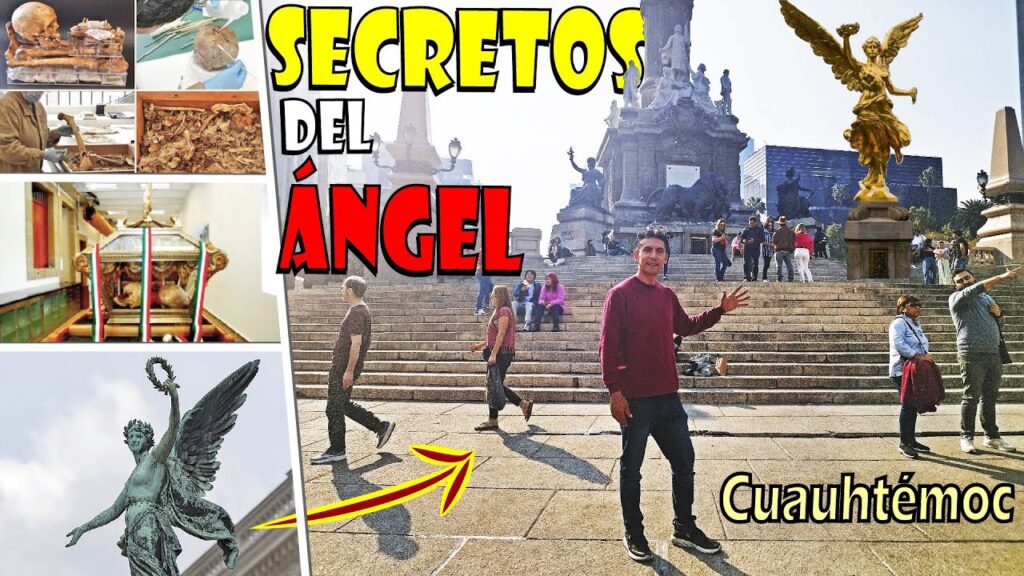The Birth of the Mexican Catholic Apostolic Church
The genesis of the Mexican Catholic Apostolic Church is as rich and vibrant as the country’s famous tapestry of culture, colors, and history. It began as a profound response to the religious and social needs of the Mexican people, following the turbulent times during the Mexican Revolution. This period marked a transformation in national identity and a re-evaluation of the country’s spiritual direction.
During the early 20th century, the Mexican government initiated a series of reforms aimed at decreasing the influence of the Roman Catholic Church and introducing secular ideologies. Among these reforms were laws that restricted religious education, mandated secular oaths for government workers, and placed limits on the church’s ability to own property. These actions generated friction and set the stage for the emergence of a localized religious movement.
The rebellion against religious constraints not only inspired political insurrections like the Cristero War (1926-1929) but also fostered a desire among many Mexicans to create a church that would resonate more deeply with their national identity and incorporate indigenous traditions. As a consequence, several Mexican clergy and laypeople began advocating for autonomy from the Roman Catholic Church, which they felt was overly influenced by European hierarchy and distant from the realities of the Mexican populace.
In 1925, José Joaquín Pérez Budar, a former Roman Catholic priest, laid the foundation of the Mexican Catholic Apostolic Church, aligning its doctrine more closely with Mexican sentiment and culture while maintaining liturgical practices similar to those of the Roman Catholic Church. The newly established church aimed to address the unique spiritual needs of Mexicans while promoting social justice and supporting the underprivileged sectors of society.
The institution swiftly gained followers who were eager for a spiritual community that honored their national heritage. It celebrated its first Eucharist in April 1926, symbolizing a new chapter for religious life in Mexico. The church’s dedication to social issues, combined with its progressive stance on various doctrinal points, has distinguished it as a significant religious movement in Mexico’s diverse spiritual landscape.
The Rise of a Nationalist ‘Pope’
In the heart of Mexico’s vibrant culture and lush landscapes, a movement has been stirring, personified by a figure often humorously termed the nationalist ‘Pope’. Not a religious leader in actuality, this symbolic ‘Pope’ represents a surge of national pride and empowerment among the Mexican people. While traveling through the cobblestone streets and wide avenues, tourists often encounter murals, music and festivals that echo the sentiments of this growing nationalist fervor.
Historically, the moniker originates from a blend of political activism and cultural renaissance. The term itself emerged in the public discourse through the art scene, with creators and intellectuals playfully anointing a leader who embodies the country’s ethos. The so-called ‘Pope’ does not rule from a Vatican, but from the hearts of the Mexican populace, advocating for a country that fiercely protects its traditions, history, and sovereignty.
The effects of this nationalist wave can be seen in the everyday life of Mexico. From the bustling markets where vendors sell homegrown products to the local schools where educators teach children about the nation’s heroes, the pride is palpable. The ‘Pope’s’ influence transcends the whims of politics, rooting itself in the social fabric of the community—a testament to Mexico’s unwavering spirit.
Travelers seeking more than the breathtaking landscapes and ancient ruins find themselves drawn to this contemporary cultural phenomenon. Engaging with the local population affords a unique glimpse into the ethos that the nationalist ‘Pope’ symbolizes—providing insight into the collective heart of Mexico. A visit to this country is not merely a trip—it’s an immersion into a tale of resurgence and pride spanning centuries, and it’s unfolding before our very eyes.
Key Figures in the Nationalist Religious Movement
Within the context of Mexico’s vibrant history, the nationalist religious movement played a pivotal role in shaping the country’s sociopolitical landscape. This movement saw the emergence of several key figures who fostered a blend of religious fervor and nationalistic sentiments.
Miguel Hidalgo y Costilla
One of the most iconic figures is Miguel Hidalgo y Costilla, often referred to as the father of Mexican independence. Hidalgo was a Catholic priest who, in 1810, initiated the Mexican War of Independence against Spanish rule. His famous “Grito de Dolores” called for an end to Spanish oppression, the abolition of slavery, and a return to indigenous rule. Hidalgo’s involvement in the religious nationalist movement is marked by his unprecedented call to arms, which balanced religious motifs with the aspirations for national sovereignty.
José María Morelos
Following Hidalgo’s footsteps, José María Morelos, another Catholic priest, took up the mantle of leadership in the independence movement. Morelos was instrumental in organizing and leading military campaigns and was also responsible for convening the Congress of Chilpancingo. This congress asserted the sovereignty of the nascent nation and sought to enshrine the rights of the people and the supremacy of Roman Catholicism as the national religion. Morelos’s dedication to both his faith and his country’s autonomy illustrates the intertwining of religious and nationalistic principles characteristic of the movement.
Guadalupe Victoria
The secular counterpart to these clerical figures is Guadalupe Victoria, one of the first presidents of Mexico and a key player in the struggle for Mexican independence. While not a religious leader, Victoria supported the adoption of Catholicism as the state religion, understanding its unifying and motivational effect on the people during the fight against Spanish colonial rule. Victoria’s embrace of religious nationalism helped solidify a collective Mexican identity in the early years of independence.
Emiliano Zapata
Fast-forwarding to the 20th century, the revolutionary Emiliano Zapata emerged as a significant figure in the post-colonial religious nationalist movement. Zapata was a leading figure in the Mexican Revolution, who fought for the rights of the peasants and for land reforms. Although not as overtly religious as his predecessors, Zapata’s advocacy for the marginalized echoed the social justice aspects of Christian doctrine. His image has since been adopted as a symbol of resistance and national pride that reflects popular religious and nationalist sentiments.
Challenges and Controversies Faced
Travel and adventure in Mexico, while offering incredible opportunities for exploration and cultural immersion, also come with a set of challenges and controversies that should be addressed with sensitivity and awareness. One notable issue is the environmental impact travelers can have on Mexico’s diverse ecosystems. The increasing foot traffic in natural reserves and coastal areas, often in pursuit of that perfect Instagram photo or off-the-beaten-path experience, poses a threat to delicate habitats and wildlife. It’s crucial for travelers to consider their ecological footprint and engage in responsible tourism practices.
Furthermore, cultural appropriation is a contentious topic that often surfaces when discussing travel in Mexico. As tourists engage with Mexico’s rich tapestry of traditions and customs, there is a fine line between cultural appreciation and appropriation. Activities such as wearing traditional garments as costume or participating in sacred rituals without a genuine understanding of their significance can be disrespectful to the local communities. Travelers must strive to celebrate and honor Mexico’s cultural heritage in a way that is respectful and mindful of historical context.
Another challenge involves the complexities of supporting local economies without contributing to over-tourism. As certain destinations in Mexico become ever more popular, there is a risk of local residents being priced out of their own neighborhoods or the character of their town changing to cater solely to tourists. The balance between boosting economic development and preserving the authenticity of local life is delicate. By choosing to patronize local businesses, participate in community-based tourism, and spread tourism to less frequented areas, visitors can play a part in distributing the benefits of tourism more evenly across the country.
The Cultural Impact on Mexico
Mexico’s vibrant culture is a colorful tapestry woven from its ancient civilizations and European colonial influences. Visitors to this dynamic country can explore the rich tapestries of the Maya and Aztec empires, which have left a powerful legacy in art, architecture, and traditional practices that continue to echo in modern Mexican life. The intricate designs and themes found in historic ruins, such as the pyramids of Teotihuacan or the Temples of Chichen Itza, reveal a sophisticated understanding of astronomy and engineering that astonishes travelers and scholars alike.
Alongside the enduring imprints of ancient cultures, the Spanish colonial period has also shaped the nation’s identity. This is evident in the baroque architecture of Mexico’s cathedrals and the haciendas that pepper the country’s landscapes, as well as the Spanish language that serves as the nation’s lingua franca. However, the blending of indigenous and European traditions has given rise to a unique cultural phenomenon known as “mestizaje”, which is reflected in music, dance, and culinary practices. From the mariachi bands of Jalisco to the mole sauces of Oaxaca, everyday life in Mexico is a celebration of this cultural fusion.
Contemporary Mexico continues to be influenced by its rich cultural heritage while also embracing modernity. This is especially apparent in its art scene, where artists like Frida Kahlo and Diego Rivera have contributed to the country’s substantial legacy in visual arts, inspiring a new generation of creators. Additionally, Mexico’s film industry has gained international acclaim through the works of directors such as Alfonso Cuarón and Guillermo del Toro. The synthesis of traditional and contemporary elements in Mexico’s culture not only enriches the local populace but also captivates the hearts of travelers from around the globe.
Modern-Day Views on the Autonomous Church
Mexico’s rich cultural tapestry is interwoven with the history and influence of the Catholic Church. The autonomy of the Church in modern Mexico stands as a testament to the country’s complex relationship with religion and governance. Throughout history, the Church has played a pivotal role in the social and political spheres of Mexico, leaving an indelible mark on the nation’s identity.
However, modern-day views on the autonomous Church reveal a nuanced perspective among Mexicans. Many acknowledge the historical significance of the Catholic Church, while simultaneously advocating for a clear separation between Church and state. This sentiment is particularly pronounced in the wake of efforts to maintain secular governance and prevent any single religion from influencing state policy.
Amid the push for secularism, the autonomous Church in Mexico still commands considerable social influence. Various religious festivals, such as the Day of the Dead and the feast of Our Lady of Guadalupe, underscore the cultural impact of the Church. These traditions remain deeply ingrained in the Mexican way of life, illustrating the Church’s ongoing relevance within society.
At the same time, the rise of other religious movements and increasing secularization among youth signal a shift in perspectives. The Church’s autonomy is being questioned as newer generations seek a more diversified spiritual landscape. This evolution suggests that the future relationship between the Church and Mexican society may be poised for change.
Despite changes in societal attitudes, the Church continues to play a role in charitable works and education. Many modern Mexicans appreciate the contributions of the Church in these areas, even as they support its independent operation from the state. The autonomous Church, thus, remains a complex entity in the eyes of contemporary Mexico, embodying both historical significance and a catalyst for evolving cultural paradigms.



